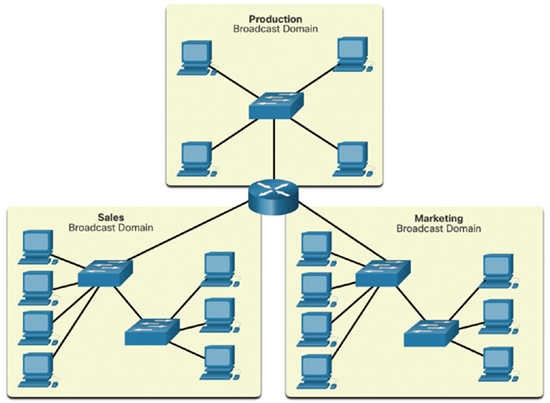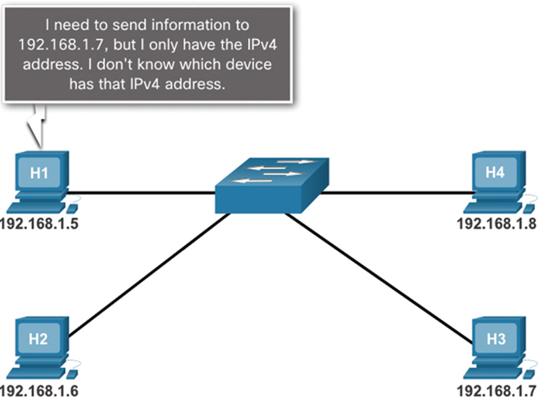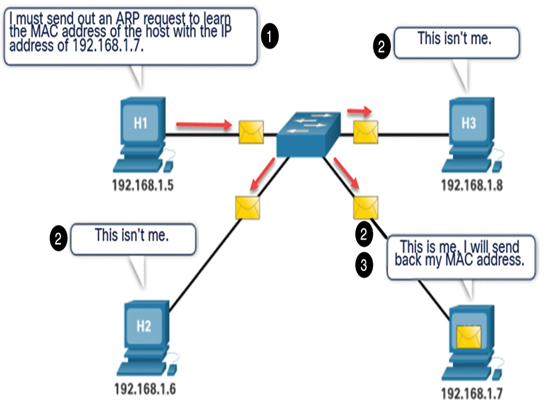When a host receives a message addressed to the broadcast address, it accepts and processes the message as though the message was addressed directly to it. When a host sends a broadcast message, switches forward the message to every connected host within the same local network. For this reason, a local area network, a network with one or more Ethernet switches, is also referred to as a broadcast domain.
If too many hosts are connected to the same broadcast domain, broadcast traffic can become excessive. The number of hosts and the amount of network traffic that can be supported on the local network is limited by the capabilities of the switches used to connect them. As the network grows and more hosts are added, network traffic, including broadcast traffic, increases. To improve performance, it is often necessary to divide one local network into multiple networks, or broadcast domains, as shown in Figure 13-5. Routers are used to divide the network into multiple broadcast domains.

Figure 13-5 An Example of Broadcast Domains Segmented by a Router
Access Layer Communication (13.2.3)
On a local Ethernet network, a NIC only accepts a frame if the destination address is either the broadcast MAC address, or else corresponds to the MAC address of the NIC.
Most network applications, however, rely on the logical destination IP address to identify the location of the servers and clients. Figure 13-6 illustrates the problem that arises if a sending host only has the logical IP address of the destination host. How does the sending host determine what destination MAC address to place within the frame?
The sending host can use an IPv4 protocol called address resolution protocol (ARP) to discover the MAC address of any host on the same local network. IPv6 uses a similar method known as Neighbor Discovery.

Figure 13-6 A Host Needs the IPv4 Address of the Destination
Video – Address Resolution Protocol (13.2.4)
Refer to the online course to view this video.
ARP (Address Resolution Protocol) uses a three-step process, as shown in Figure 13-7, to discover and store the MAC address of a host on the local network when only the IPv4 address of the host is known:
1. The sending host creates and sends a frame addressed to a broadcast MAC address. Contained in the frame is a message with the IPv4 address of the intended destination host.
2. Each host on the network receives the broadcast frame and compares the IPv4 address inside the message with its configured IPv4 address.
3. The host with the matching IPv4 address sends its MAC address back to the original sending host. The sending host receives the message and stores the MAC address and IPv4 address information in a table called an ARP table.

Figure 13-7 An Example of a Host Using ARP to Determine the IPv4 Address
When the sending host has the MAC address of the destination host in its ARP table, it can send frames directly to the destination without doing an ARP request. Because ARP messages rely on broadcast frames to deliver the requests, all hosts in the local IPv4 network must be in the same broadcast domain.
Check Your Understanding – Broadcast Containment (13.2.6)
Refer to the online course to complete this activity.
The ARP Process Summary (13.3)
The following is a summary of each topic in the chapter and some questions for your reflection.
